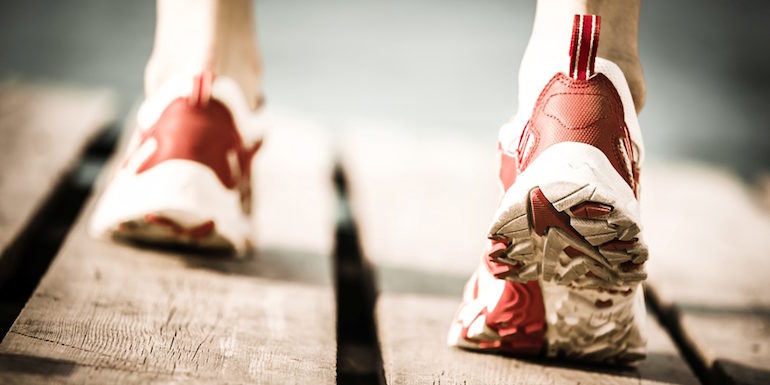Walking is one of the best ways to break into regular exercise. If you’ve never been very active, just adding a 20 minute walk every day will help you get on track when it comes to fitness. However, if it isn’t something you’ve done before you may be at a loss how to get started or even what accessories you need. The good news is that walking only requires a decent pair of walking or running shoes. And, if you are interested in pursuing a more ambitious workout schedule you can use the same shoes to do a program like Couch to 5K. Here are some tips for choosing the right shoes for your new walking routine.
The right running shoes for the right activity
You want to make sure the shoes are designed for walking or running. Tennis shoes or other types of shoes designed for specific activities may not be right for walking. You may find “cross-trainers” that work for you, but it will really depending on the specific fit and feel.
The right support
All of your shoes, from walking shoes to business shoes, should have the right support for your feet. Without this, you may eventually suffer from painful conditions in the foot that may have been prevented by proper footwear. You may need to speak with a sales associate about what works for you because not all feet are created equal.
The right heel
You also want to make sure that the running shoe does not have a bulky heel. When you walk you strike the ground with your heel first and then roll forward onto your toes. This motion should feel natural and much of that sensation will depend on the way the heel works with your natural gait.
The right weight
For walking you want a shoe that is made of light weight and breathable materials. Heavy leather shoes won’t allow your feet to move in the manner necessary for safe walking. You also don’t want your feet to feel overheated on your workout.
The right fit
Finally, it is most important that your new running shoes actually fit. Your toes need to fit comfortably and there should be about a half inch of space between the end of your toes and the front of the shoe. The heel should not slip, which can cause blisters, and it should not pinch your foot in any way. You should be able to wiggle your toes freely in the shoe.
After buying your shoes, but before you go for a few walks, wear the running shoes around the house to break them in a bit. Make sure they are completely comfortable before they are worn on the street in case you need to take them back and exchange them for a different pair. Don’t go shoe shopping when you’re in a hurry. This isn’t a decision that should be made quickly. Also, keep track of how long you’ve owned your shoes. After about 300 to 600 miles you will need to replace them. In order to maintain the lifespan of these shoes, only wear them for walking and not everyday activities.
Further, if you suffer from a chronic pain condition like arthritis, you’ll want to talk to your doctor about even additional guidance.
Have you had experiences buying walking or running shoes that could help other readers?


